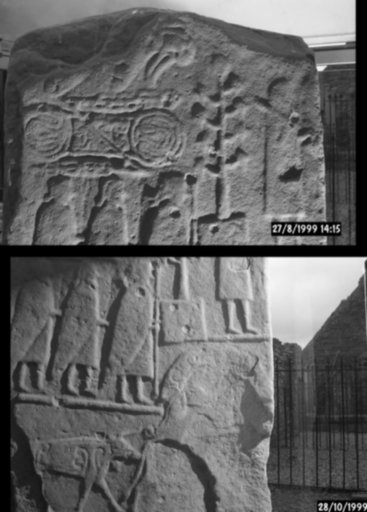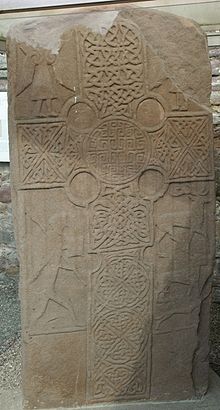It looks like you're using an Ad Blocker.
Please white-list or disable AboveTopSecret.com in your ad-blocking tool.
Thank you.
Some features of ATS will be disabled while you continue to use an ad-blocker.
share:
beansidhe
So we have St Andrew preaching to Thracian Celts in the first century, and somehow before the end of the second century, Scotland is subdued to Christ? I didn't learn that at school! These Celts were coming over and bringing with them the teaching of Jesus? But presumably Jesus wouldn't make much sense in a vacuum, would you not need to know about 'Christianity' ie Old Testament things in order to know that Jesus was prophesised to appear? Or is this propaganda from Tertullian -although I don't know what the benefit would be to him.
Somewhere out there is some research that claims that St Paul was related to the Silurian and probably then the Catuvellauni royal houses. When Caratacus was taken to Rome and spared Paul lived with Caratacus and some of his relatives. Paul was also said to have founded a church in New Troy sometime before 70 a.d.
reply to post by Logarock
Oh every time, Logarock, you go and pull something out of the bag. I can hardly believe what you've found!!!!!!!
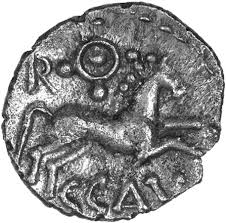
The mirror motif on the Silurian coin!!! I'm sure it is.
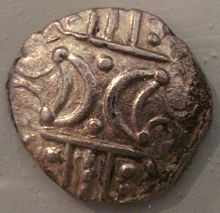
Queen Boadicea's tribe has the crescent emblem, I see. And yes, that is unmistakably writing on these BC coins. This is great, really great!
Oh every time, Logarock, you go and pull something out of the bag. I can hardly believe what you've found!!!!!!!

The mirror motif on the Silurian coin!!! I'm sure it is.

Queen Boadicea's tribe has the crescent emblem, I see. And yes, that is unmistakably writing on these BC coins. This is great, really great!
Logarock
Somewhere out there is some research that claims that St Paul was related to the Silurian and probably then the Catuvellauni royal houses. When Caratacus was taken to Rome and spared Paul lived with Caratacus and some of his relatives. Paul was also said to have founded a church in New Troy sometime before 70 a.d.
Alan Wilson has Caratacus/Caradoc's genealogy as him being the grandfather of no less than 3 saints (Timotheus, Pudentiana, Praxades) and the father of St. Eurgain. Caradoc's daughter, Gwladys (later Claudia) was adopted by the Emperor Claudius during a period of truce between the Khmry/British and the Romans. She was also, incidentally, baptized by St Illid (possibly Joseph of Arimathea).
She is mentioned in the Epistles of St.Paul as Claudius, sister of Linus (Caradoc's son).
St. Paul, I believe, is meant to have preached in the spot where St. Paul's Cathedral now stands in London. Plenty of links to tie these people together.
This is where I'm getting confused, and maybe in danger of throwing the baby out with the bath water. If you accept these genealogies, you accept the Brutus of Tyre story. In that story, Albanectus, Brutus' second son is given Scotland/Alba to rule. This doesn't fit, because we know that it wasn't called Alba until many centuries later. Also, if Albanectus was handed Scotland, what happened next? We have Kin-tyre (family/friends of Tyre?) but I'm not sure.
ETA:
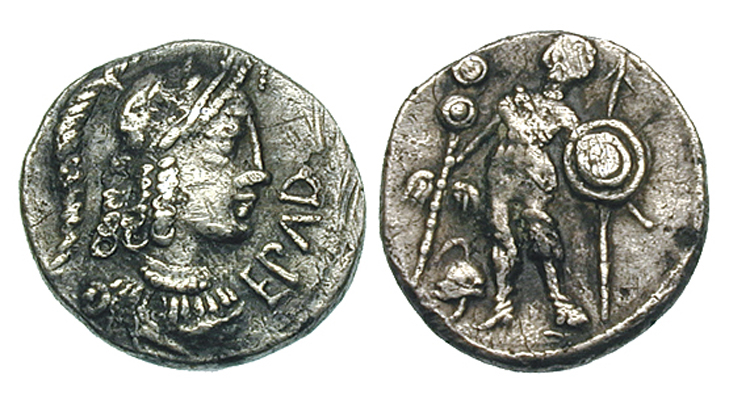
A coin from Gaul (RHS) - is the figure holding a staff with a double disc?
edit on 14-4-2014 by beansidhe because: ETA
beansidhe
reply to post by PonderingSceptic
Princess Meda, from what little I can find about her, was the daughter of the Thracian King Cothelas. She married Philip II of Macedon, who had previously been married to Olympia, herself a princess of Epirus (an area around Greece/Albania) and mother of Alexander the Great.
The marriage , presumably, cemented relationships between Thrace and Macedonia? Meda herself would have become Alexander the Great's step-mother?
Epirus was important as alliance was needed. Thrace was important as a place of amphictyony with allies including Dacians, Getes, earlier with Troy (Ilion/Wilion, Wilusa) and more. Places beyond Danube were poorly known (Herodotus writes about it) to Greeks for a reason, they weren't allowed there. It likely changed and it may coincide with some of the old laws followed by Getes.
History about Princess Meda is not so widely known as most traces of it were erased from history. Claims come from Athenaios who writes, he knows it from Satyrus, which is disputed by Jordanes on the grounds, that she couldn't have accepted it in the first place. While at the same time all agree that Odessos goes from Cothelas (called by Greeks, while real name was likely Gudila) to Philip rather peacefully. Either way (despite opinions on marriage story) there were changes to amphictyony(-s) and archeology on large scale (widely outside The Area) from that point.
reply to post by PonderingSceptic
You are intriguing me with these stories, because this isn't readily available information in Scotland. I can dig about for it of course, and I certainly will now. I really appreciate your input here, this is an important part of the story.
You are intriguing me with these stories, because this isn't readily available information in Scotland. I can dig about for it of course, and I certainly will now. I really appreciate your input here, this is an important part of the story.
beansidhe
ETA:
A coin from Gaul (RHS) - is the figure holding a staff with a double disc?edit on 14-4-2014 by beansidhe because: ETA
Danubian Celt Coins
Just added these for review,
In regards to the double disc symbol which in its simplicity, shows a connection between two spheres, the symbol reads as a form of communication.
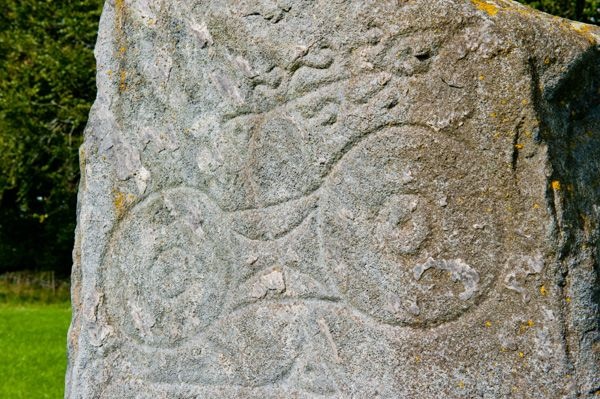
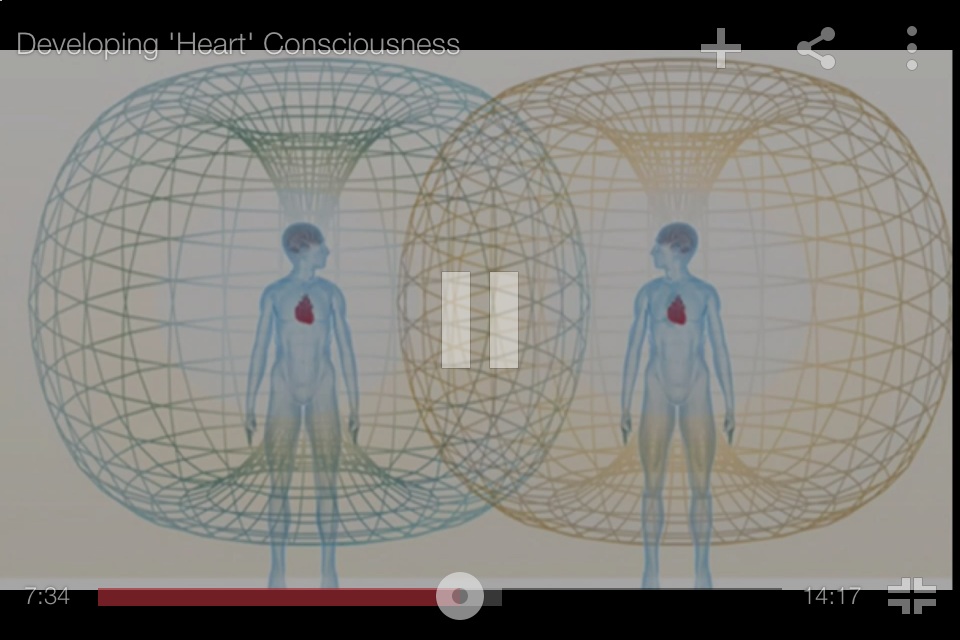
The circles with inner circle and dot represent a toroidal field from above/below. With a arc connection.



The circles with inner circle and dot represent a toroidal field from above/below. With a arc connection.

reply to post by Wifibrains
Thanks Wifi. I can't watch your video at the moment (it's blocked at my end) but I'm looking forward to seeing it tonight, before I try and make any sort of comment
Thanks Wifi. I can't watch your video at the moment (it's blocked at my end) but I'm looking forward to seeing it tonight, before I try and make any sort of comment
beansidhe
reply to post by Wifibrains
Thanks Wifi. I can't watch your video at the moment (it's blocked at my end) but I'm looking forward to seeing it tonight, before I try and make any sort of comment
No problem! The video is not perticularly related to this thread per se, it is rather more about toroidal fields being able to comuninicate.
It's interesting that from the side the torus looks like a apple, perhaps it is the fruit from the tree of knowledge/life?

edit on 15-4-2014 by Wifibrains because: (no reason given)
reply to post by beansidhe
Samnites
What so the Romans didn't learn this from the Greeks?
Whats in a Name
Part of the Celtic Empire before the rise of Rome
Its very clear that before Rome got on its feet they had had centuries of problems with the Celtic efforts at Empire. As did the Greeks and just about every body else.
The Celts Taught the Romans How to War
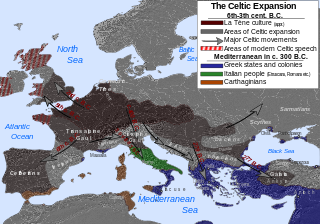
The Umbri/Ombrii....What anither Celtic Tribe in Italy?
Umbri/Ombrii of Italy were Istalites/Omrides of Hebrew King Omri
This will take some time to go over but its well worth it.
Ancient sources state that Rome initially borrowed hoplite tactics (the use of the phalanx) from the Etruscans (used during the 6th or 5th century BC) but later adopted the manipular system of the Samnites, probably as a result of Samnite success at this time. The manipular formation resembled a checkerboard pattern, in which solid squares of soldiers were separated by empty square spaces. It was far more flexible than the solidly massed hoplite formation, allowing the army to maneuver better on rugged terrain. The system was retained throughout the republic and into the empire.
Samnites
What so the Romans didn't learn this from the Greeks?
Linguist Julius Pokorny carries the etymology somewhat further back. Conjecturing that the -a- was altered from an -o- during some prehistoric residence in Illyria, he derives the names from an o-grade extension *swo-bho- of an extended e-grade *swe-bho- of the possessive adjective, *s(e)we-, of the reflexive pronoun, *se-, "oneself" (the source of English self). The result is a set of Indo-European tribal names (if not the endonym of the Indo-Europeans): Germanic Suebi and Semnones, Suiones; Celtic Senones; Slavic Serbs and Sorbs; Italic Sabelli, Sabini, etc., as well as a large number of kinship terms. The general concept is "our own kith and kin," Pokorny's "von eigener Art," "Gesamtheit der eigenen Leute," "Liebe," "Sippegenossen," "Sippenangehörigen," and the like.[5]
Whats in a Name
In about 400 BC they crossed the Alps and, having driven out the Umbrians settled on the east coast of Italy from Forlì to Ancona, in the so-called ager Gallicus, and founded the town of Sena Gallica (Senigallia), which became their capital. In 391 BC they invaded Etruria and besieged Clusium. The Clusines appealed to Rome, whose intervention, accompanied by a violation of the law of nations, led to war, the defeat of the Romans at the Battle of the Allia (18 July 390BC) and the sacking of Rome.
Part of the Celtic Empire before the rise of Rome
Its very clear that before Rome got on its feet they had had centuries of problems with the Celtic efforts at Empire. As did the Greeks and just about every body else.
Many historians speculate that the Romans learned much about weapons technology and battle tactics from this run-in with the Senones. Though only a single tribe, the Senones were part of the much larger culture of Celts (or Gauls) that had more advanced iron-working and close-quarter combat techniques. Specifically, the Celts/Gauls used heavier long swords and full body shields, which allowed them to interlock shields for greater defense (a tactic later named "tortoise" (testudo) in the Roman histories).
The Celts Taught the Romans How to War

Also called Ombrii in some Roman sources. Many Roman writers thought the Umbri to be Celtic; Cornelius Bocchus wrote that they descended from an ancient Gaulish tribe. Plutarch wrote that the name might be a different way of writing the name of the Celtic tribe Ambrones, which loosely means "King of the Boii." He also suggested that the Insubres, another Gaulish tribe, might be connected; their Celtic name Isombres could possibly mean "Lower Umbrians," or inhabitants of the country below Umbria. Pliny the Elder wrote concerning the folk-etymology of the name:
The Umbrian people are thought the oldest in Italy; they are believed to have been called Ombrii (here, "the people of the thunderstorm," after ὅμβρος, "thunderstorm") by the Greeks because they survived the deluge (literally "the inundation of the lands by thunderstorms, imbribus). The Etruscans vanquished 300 Umbrian cities.
[2]
The Umbri/Ombrii....What anither Celtic Tribe in Italy?
According to the First Book of Kings Ben-Hadad I, who first emerges late in the reign of the long-reigning king Asa of Judah (c. 911-870 BC, conventional dates), was "son of Tab-rimmon son of Hezion of Aram" (1.Kings 15:18). What I am going to suggest is that the obscure Tab-rimmon, father of Ben-Hadad I, was actually the same person as Omri, and that therefore Ben-Hadad I and Ahab, son of Omri, were brothers. And I shall be basing myself on this text (1.Kings 20:32-33):
Umbri/Ombrii of Italy were Istalites/Omrides of Hebrew King Omri
This will take some time to go over but its well worth it.
reply to post by Logarock
This is excellent, thanks Logarock. I'm heading off soon, so I'll read it through when I get back
This is excellent, thanks Logarock. I'm heading off soon, so I'll read it through when I get back
reply to post by Wifibrains
Tree of life you say?
I can't post pictures at this minute, but I'll link you back to page 30. About half way down you'll notice the 'tree of life' actually carved on a Pictish stone.
Tree of life you say?
I can't post pictures at this minute, but I'll link you back to page 30. About half way down you'll notice the 'tree of life' actually carved on a Pictish stone.
beansidhe
I'm still scanning the other stones for Tau's/T's but does this tree look familiar to anyone? They're maybe showing winter, or is it a known design elsewhere?
Eassie stone:
As a note of interest, this is from the back of the stone with the 2nd four winged 'angels':
edit on 11-3-2014 by beansidhe because: eta
Ok, now it fits!
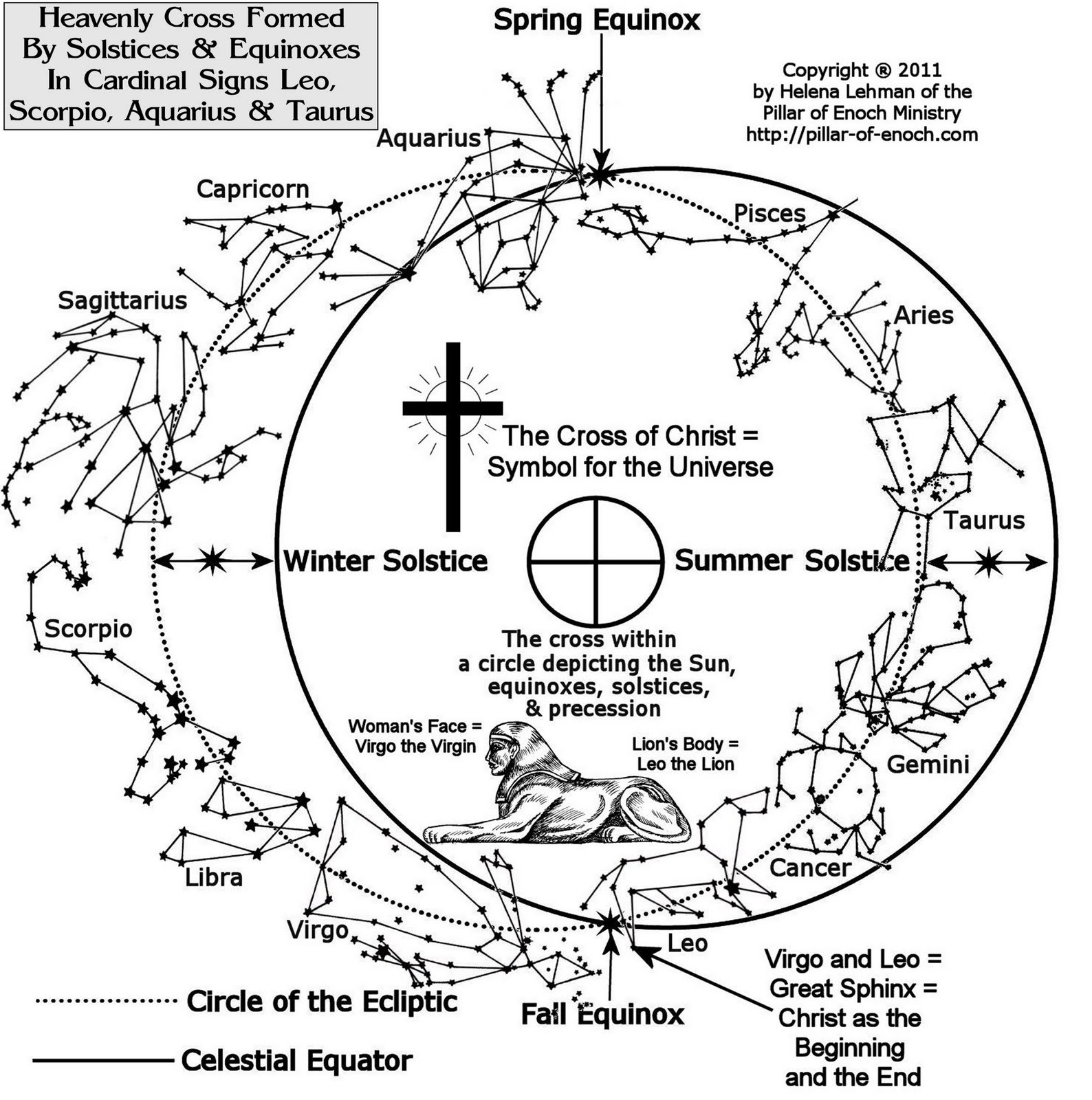
In the center, around the throne, were four living creatures, and they were covered with eyes, in front and in back. 7 The first living creature was like a lion, the second was like an ox, the third had a face like a man, the fourth was like a flying eagle.
Ezekial
10 As for the likeness of their faces, they four had the face of a man, and the face of a lion, on the right side: and they four had the face of an ox on the left side; they four also had the face of an eagle.
If we consider these symbols to represent ages for our earth and to further represent something more (because these four ages have been singled out from a total of twelve), we might start by looking at the ages themselves and what their ancient symbolism tells us about them.
Aquarius, the age we are now entering, is a man.
Taurus, the age we were in some 4400 to 6600 years ago, is a bull.
Leo, the age we were in some 11,000 to 13,200 years ago, is a lion.
Scorpio, the age we were in some 17,600 to 19,800 years ago, is an eagle.
These four signs, ages, have something in common. They are all four known as fixed signs. Fixed signs are not easily distracted. They go straight. These four creatures are also described this way in Ezekiel.
Ezekiel
12 And they went every one straight forward: whither the spirit was to go, they went; and they turned not when they went.
They are the four fixed signs of the zodiac. The other signs are not considered fixed - they are something else.edit on 15-4-2014 by Wifibrains because: (no reason given)edit on 15-4-2014 by Wifibrains because: (no reason given)
reply to post by Wifibrains
Ah, is this related to the Thrive Movement?
Which I found fascinating by the way.
Ah, is this related to the Thrive Movement?
Which I found fascinating by the way.
edit on 15/4/14 by Ramcheck because: (no reason given)
edit on 15/4/14 by Ramcheck
because: can't spell today
reply to post by Ramcheck
Its the same geometry, nassin Haremein explains it a little better I think.
Its the same geometry, nassin Haremein explains it a little better I think.
reply to post by Logarock
Let me see if I've got this right. Before the Etruscans, there were the Umbri, a Celtic clan, living in Italy and having over 300 cities; 300 being destroyed by the Etruscans - the Etruscans then going on to found Rome.
It is possible that these Umbri -a Celtic clan- were descendants of the Israeli king Omri, from the line of Judah. This is around 9th/10th c BC. Omri is said to have bought land and strengthened Samaria.
A couple of hundred years later, the Celtic Senones/Samnites booted out the Umbrians and established Sena Gallica. They then invaded Etruria leading to the Battle of Allia in 390 BC, a Roman defeat. Hence the Romans learned the art of war from the Celts.
Wow. And here's me thinking the Celts were raggedy bands of mercenaries, scratching out a living around the prosperous Mediterranean.
So the Romans had dealt with, and lost wars with, the Celtic tribes for centuries before they ever came to Britain. Ireland and Scotland were the Western edge, the last bastion of Celtic rule and safety from the sprawling Roman empire.
Let me see if I've got this right. Before the Etruscans, there were the Umbri, a Celtic clan, living in Italy and having over 300 cities; 300 being destroyed by the Etruscans - the Etruscans then going on to found Rome.
It is possible that these Umbri -a Celtic clan- were descendants of the Israeli king Omri, from the line of Judah. This is around 9th/10th c BC. Omri is said to have bought land and strengthened Samaria.
A couple of hundred years later, the Celtic Senones/Samnites booted out the Umbrians and established Sena Gallica. They then invaded Etruria leading to the Battle of Allia in 390 BC, a Roman defeat. Hence the Romans learned the art of war from the Celts.
Wow. And here's me thinking the Celts were raggedy bands of mercenaries, scratching out a living around the prosperous Mediterranean.
So the Romans had dealt with, and lost wars with, the Celtic tribes for centuries before they ever came to Britain. Ireland and Scotland were the Western edge, the last bastion of Celtic rule and safety from the sprawling Roman empire.
reply to post by beansidhe
Certainly gives good scope for building a wall the next time they ran into them.
Certainly gives good scope for building a wall the next time they ran into them.
new topics
-
'Mass Casualty event' - Attack at Christmas market in Germany
Mainstream News: 2 hours ago -
Search to Resume for MH 370
Disaster Conspiracies: 5 hours ago -
Sue Gray, Sir Keir Starmer's former Chief of Staff, Nominated for Peerage
Regional Politics: 6 hours ago -
Biden Nationalizes Another 50,000+ Student Loans as He Heads for the Exit
US Political Madness: 7 hours ago
top topics
-
'Mass Casualty event' - Attack at Christmas market in Germany
Mainstream News: 2 hours ago, 19 flags -
An Interesting Conversation with ChatGPT
Science & Technology: 16 hours ago, 8 flags -
Biden Nationalizes Another 50,000+ Student Loans as He Heads for the Exit
US Political Madness: 7 hours ago, 7 flags -
Search to Resume for MH 370
Disaster Conspiracies: 5 hours ago, 4 flags -
Sue Gray, Sir Keir Starmer's former Chief of Staff, Nominated for Peerage
Regional Politics: 6 hours ago, 3 flags
active topics
-
'Mass Casualty event' - Attack at Christmas market in Germany
Mainstream News • 34 • : chr0naut -
Squirrels becoming predators
Fragile Earth • 36 • : ManSizedSquirrel -
An Interesting Conversation with ChatGPT
Science & Technology • 22 • : hydr0cannibal -
Can someone 'splain me like I'm 5. Blockchain?
Science & Technology • 91 • : imitator -
Drone Shooting Arrest - Walmart Involved
Mainstream News • 37 • : BeyondKnowledge3 -
US Federal Funding set to Expire December 20th. Massive CR on the way.
Mainstream News • 50 • : Skinnerbot -
Russias War Against Religion in Ukraine
World War Three • 54 • : andy06shake -
Search to Resume for MH 370
Disaster Conspiracies • 3 • : chr0naut -
-@TH3WH17ERABB17- -Q- ---TIME TO SHOW THE WORLD--- -Part- --44--
Dissecting Disinformation • 3768 • : Thoughtful3 -
Have you noticed?? Post Election news coverage...
World War Three • 10 • : chr0naut

